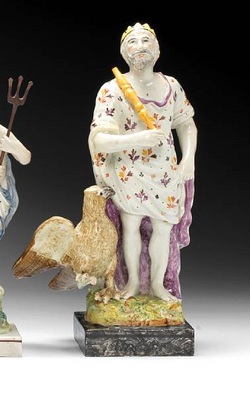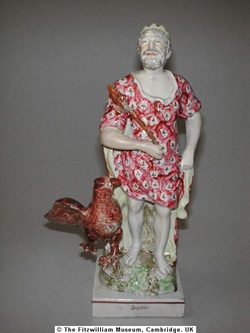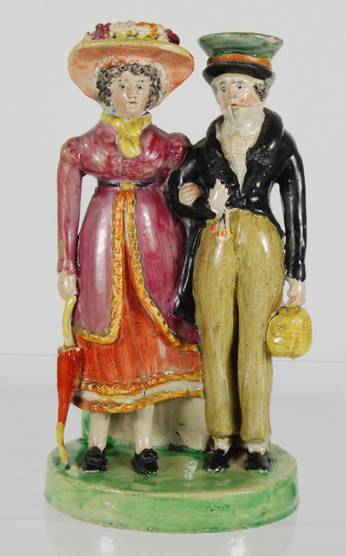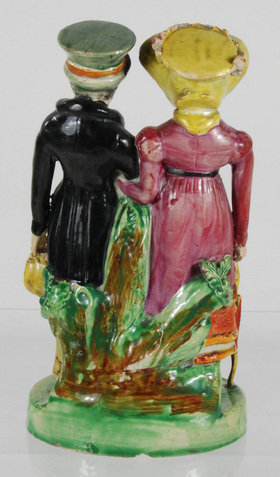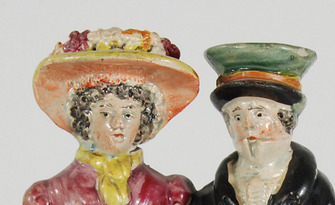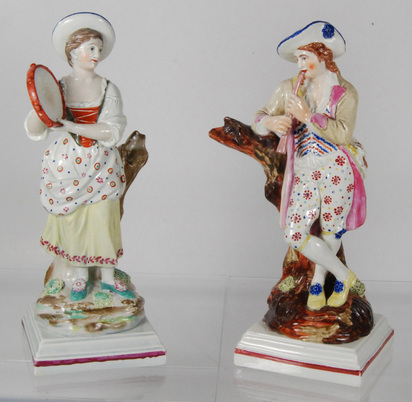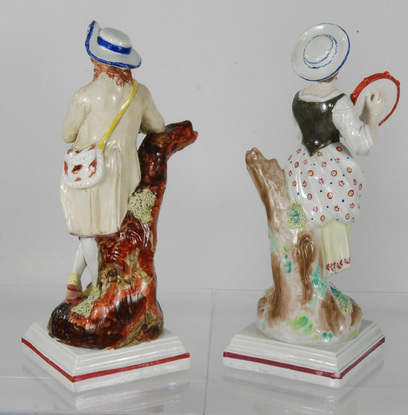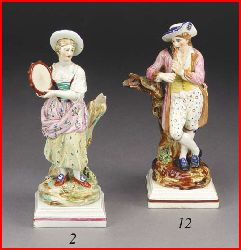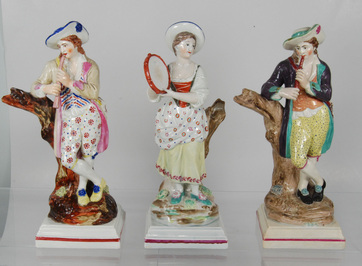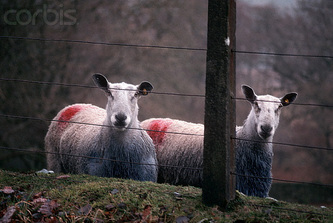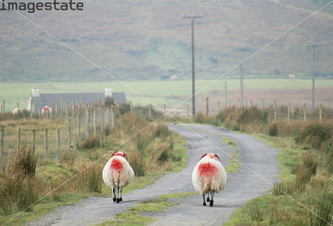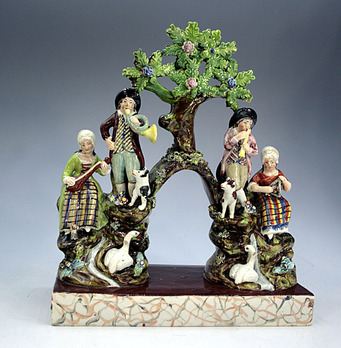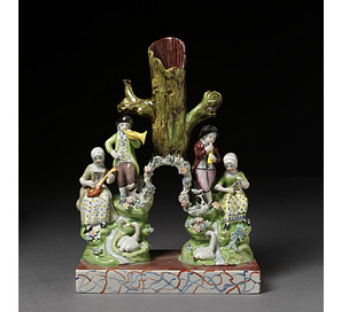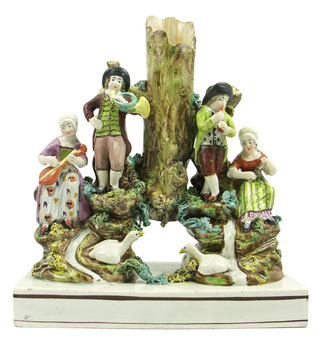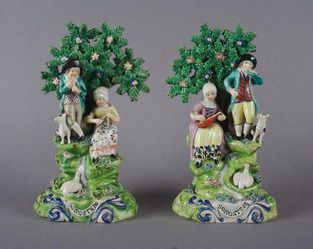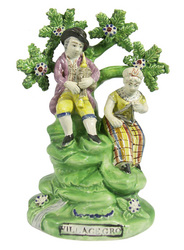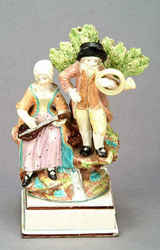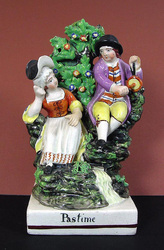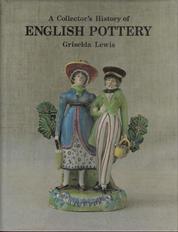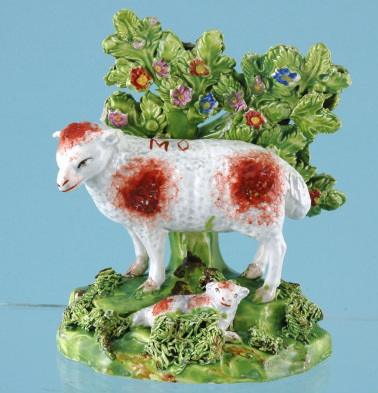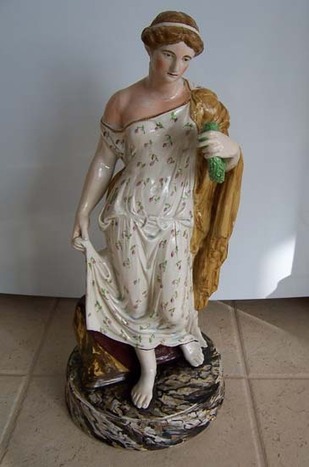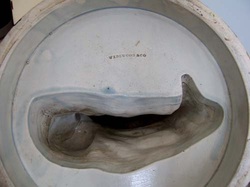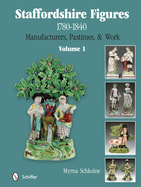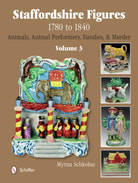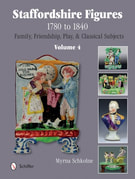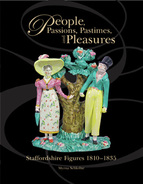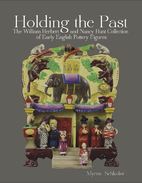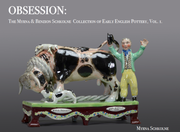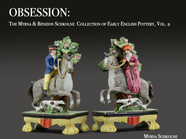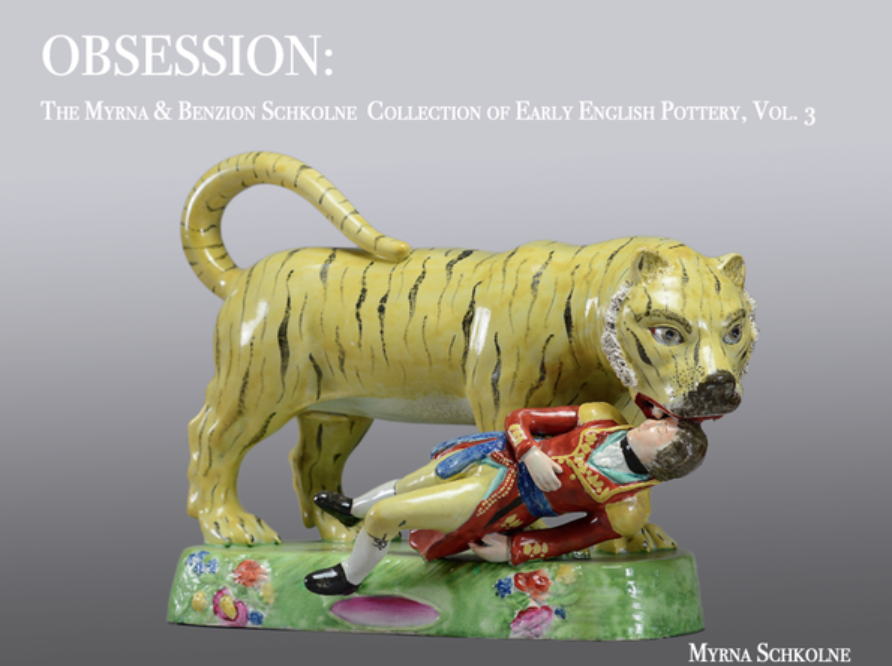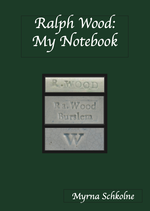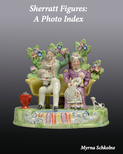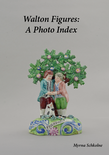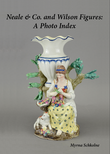Now all the pieces of the puzzle fall into place: Ralph Wood made this figure....but with the wrong title. Oops! When it emerged from the kiln, someone realized that Jupiter had been given the wrong name. What was to be done? It was impossible to erase and replace....but how about concealing? A little black enameling covered the mistake, as well as the rest of the base. How nice that it was marbled rather than solid, for today we can see exactly what happened. BTW, this figure is titled Jupiter beneath, just to give this god his due!
I have had lots of emails in past weeks about items coming up at various auctions. Please be careful. Most often, auction houses do not supply complete condition reports--Bonhams, London, where Jupiter is to be sold, is most thorough. When the hammer goes down the sale is final. Please only bid at auction if you have the experience to assess price. Don't forget to factor in buyer's premium and shipping costs. Figure it all out, set yourself a limit--and stop your bidding right there. When I 'win' at auction, I temper my jubiliation with a sobering reminder: the winner is sometimes the biggest fool. Today's auctions are so well publicized internationally. It's not the greatest feeling to know that you have paid more than any other collector or dealer was prepared to pay....but if you get something you have coveted for ages, something you probably will not get another shot at, it was worth it. Anything else? Think again!
